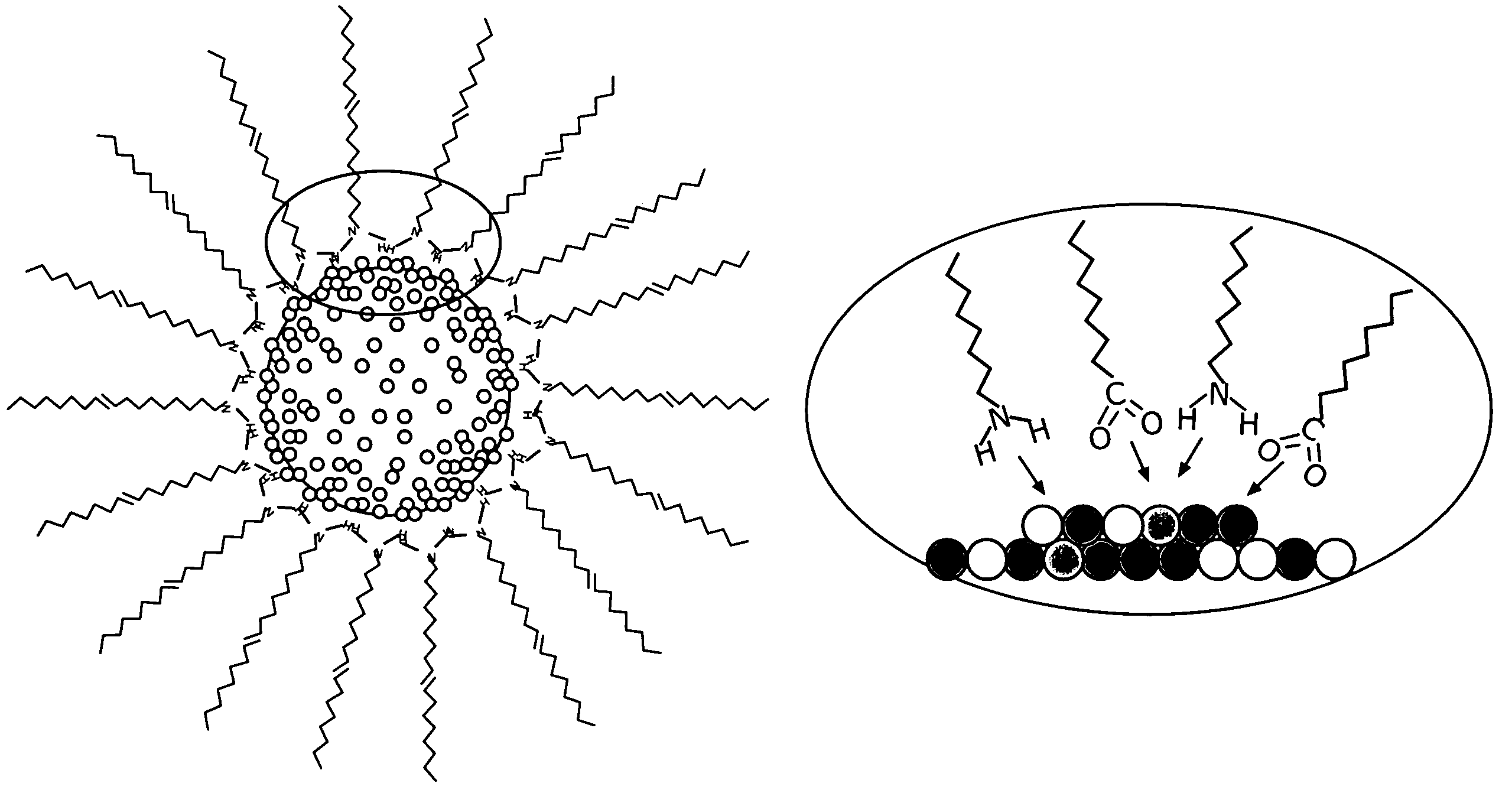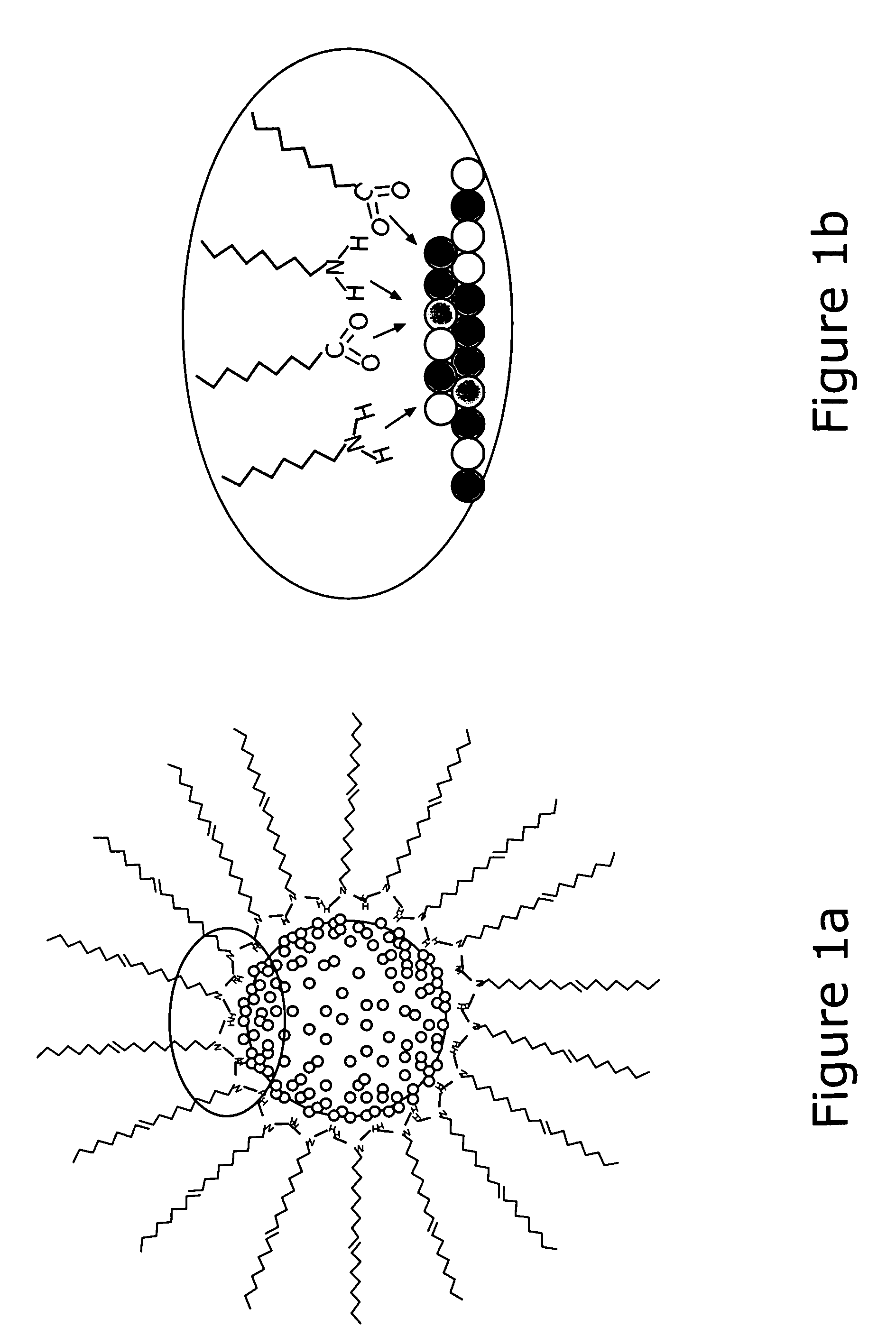Core-shell synthesis of carbon-supported alloy nanoparticle catalysts
a carbon-supported alloy and core-shell technology, applied in the direction of metal/metal-oxide/metal-hydroxide catalyst, physical/chemical process catalyst, metal/metal-oxide/metal-hydroxide catalyst, etc., can solve the problems of high cost of pt-group metals, limited fuel cell efficiency and fuel economy of fuel cells using these catalysts, etc., to achieve effective activation
- Summary
- Abstract
- Description
- Claims
- Application Information
AI Technical Summary
Benefits of technology
Problems solved by technology
Method used
Image
Examples
Embodiment Construction
[0029]Synthesis of Core-Shell PtVFe Nanoparticles The synthesis and processing of core-shell PtVFe nanoparticles of the present invention are based on prior work as described in the references provided hereinabove, expanding upon the synthesis and processing methods for core-shell gold and gold-alloy nanoparticles and catalysts described therein. The novel core-shell preparative approach of the present invention, however, differs significantly from all prior art preparation methods and techniques such as deposition / co-precipitation approaches for the preparation of PtVFe nanoparticle catalysts.
[0030]Referring first to FIGS. 1a and 1b, there are shown schematic pictorial representations of a core-shell PtVFe nanoparticle prepared in accordance with the present invention. FIG. 1a shows an overall view of a single nanoparticle while FIG. 1b shows an enlargement of a portion of the surface of the nanoparticle of FIG. 1a. FIG. 1a shows a ternary nanocrystal core capped a monolayer organi...
PUM
| Property | Measurement | Unit |
|---|---|---|
| size | aaaaa | aaaaa |
| size | aaaaa | aaaaa |
| size | aaaaa | aaaaa |
Abstract
Description
Claims
Application Information
 Login to View More
Login to View More - R&D
- Intellectual Property
- Life Sciences
- Materials
- Tech Scout
- Unparalleled Data Quality
- Higher Quality Content
- 60% Fewer Hallucinations
Browse by: Latest US Patents, China's latest patents, Technical Efficacy Thesaurus, Application Domain, Technology Topic, Popular Technical Reports.
© 2025 PatSnap. All rights reserved.Legal|Privacy policy|Modern Slavery Act Transparency Statement|Sitemap|About US| Contact US: help@patsnap.com



